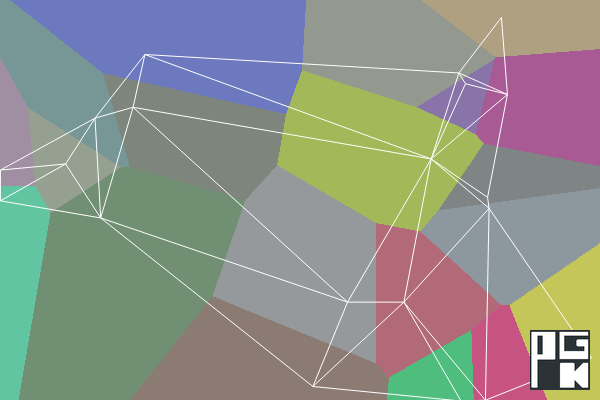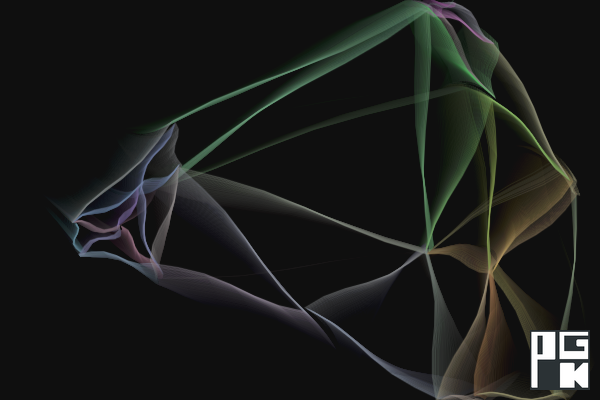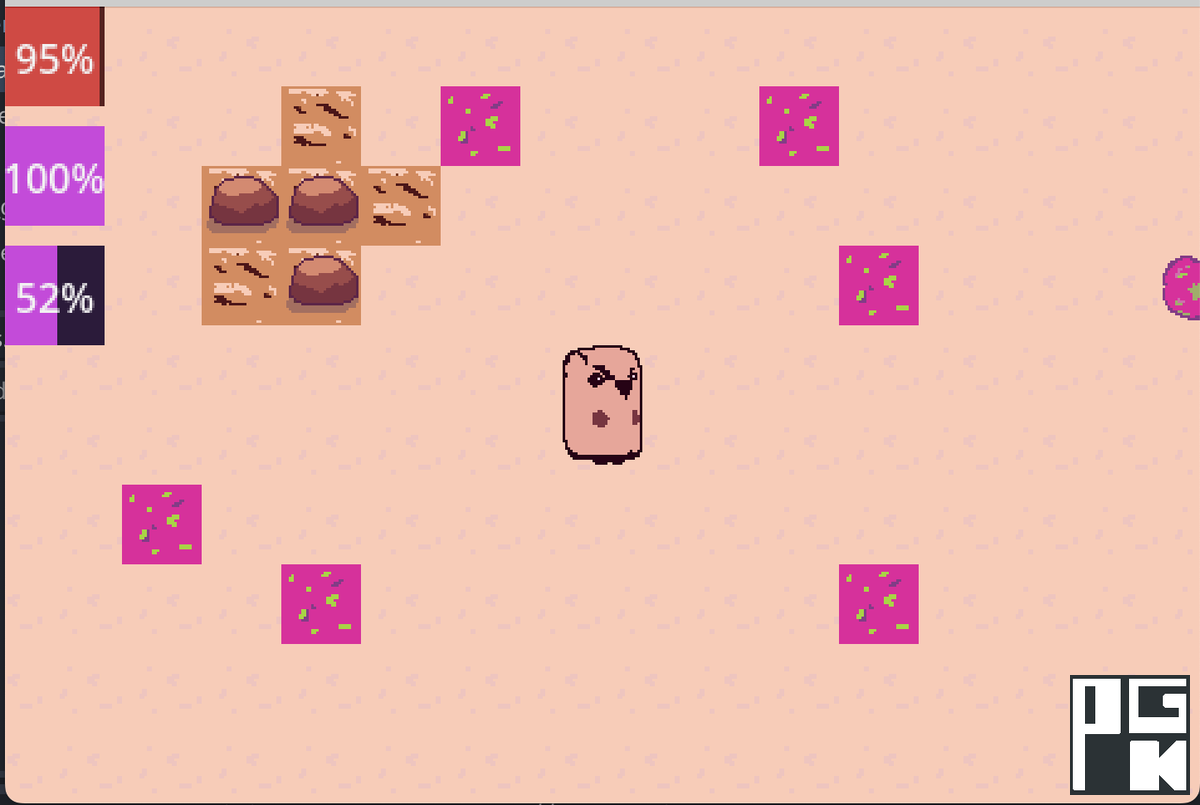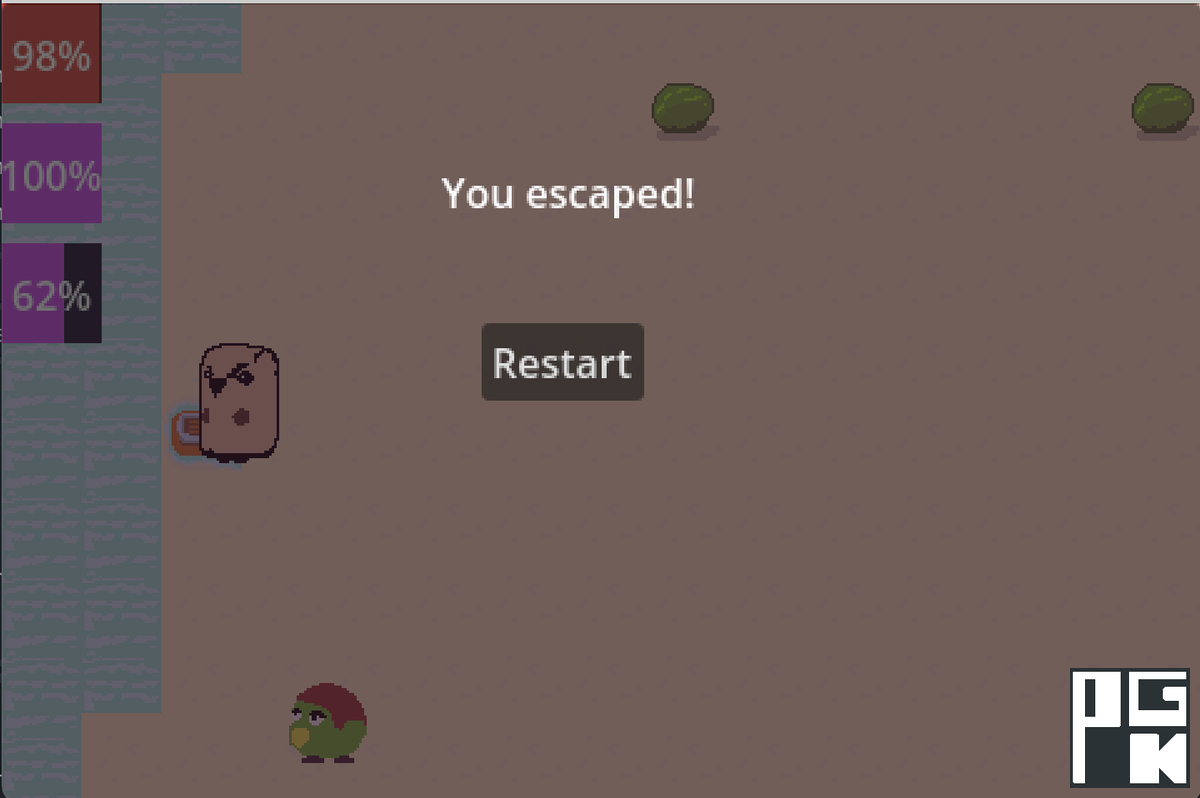#survivalgame learning detour.
To better understand how #voronoi works, I made a little Voronoi Playground.


#gamedev #godot4 #devlog #partitioning #experiment
Related 6d675fc0-cfe1-4282-a2c8-ecd921c8be85.
 Kountanis
Kountanis
#survivalgame learning detour.
To better understand how #voronoi works, I made a little Voronoi Playground.


#gamedev #godot4 #devlog #partitioning #experiment
Related 6d675fc0-cfe1-4282-a2c8-ecd921c8be85.
#survivalgame update, after a short detour.
#procedural island generation now runs a simple #floodfill check to make sure the player can always reach the escape tile.
I also added a "region tagging" layer to help structure the island. Tags like TOXIC_REGION and ROCK_PATCH are painted after the terrain is built — they don’t mess with the shape, just mark areas that might get overridden.
Still thinking about whether Voronoi-style regions would work better for this.
#survivalgame update
Over the last couple days I tightened up core progression and added more environmental pressure to the survival loop.
Level progression now works. Each win triggers a new, slightly harder procedurally generated island. Enemies increase, and toxicity ramps up faster. There's no menu or break, just continuous survival.
Toxicity now causes damage over time once it crosses a threshold. It’s slow but relentless, and pairs with a subtle screen tint that deepens as it rises.
I replaced odor-lingering with a manual odor release system. Holding a key charges up a stink burst, and the longer you hold, the stronger it is. A small shake and sprite tint give it some weight.
I also added toxic zones to the environment. These are random patches of poison ground that hurt on contact. The chance of them appearing increases with level, adding more tension to movement.

#gamedev #survivalgame update:
Today was all about levelling up — literally.
I added basic level progression: each time you escape the island, a new one generates, harder than the last. Toxicity now ramps faster with each level, and more enemies spawn in, making each run feel just a little more urgent.
Also tweaked how enemies are placed — they now avoid spawning too close to you or in weird spots like on top of rocks and other obstacles.
Finally, refactored some things under the hood to make it easier to scale the challenge as the marten keeps surviving. Still early, but the game loop is getting tighter.

You can find the original game post in: 61dea628-d89f-46ef-a90e-8dd954783675
Quick followup note to the last status (36e2d2e0-3528-4723-b500-1b34561472d5) for folks following along:
I’m building a 2D #survivalgame in #godot4. You play a cartoonish pine marten (?), trying to escape a procedurally generated island full of mutated toxic chickens. It's stealthy, a little weird, and doesn't lean on brute force.
The main mechanics revolve around odor — you leave scent trails, lure enemies, and use your stink to survive. It’s kind of gross. It’s kind of tactical...
Still early, but the core loop is taking shape — explore, survive, escape... or toxicity lurks..
#gamedev #survivalgame update:
Today I wired up the #toxicity system — a slow-burning threat that ramps over time. Once it crosses a threshold, it starts chipping away at your health. Not instant death, but a steady pressure -- you need to move if you want to survive! I like that it creates tension without being loud about it.
To make it felt, I added a screen tint that grows more intense as toxicity rises. Started with a ColorRect, but #godot4 threw some layout curveballs, so I switched to a Panel. This sort of visual feedback feels more straightforward than timers and alerts.
Also dropped in a proper death condition: when health hits zero, you get a loss screen and a reset button. And on the flip side, walking onto a coastline escape tile brings up the win screen.
Lastly, I cleaned up the HUD — health, odor, and toxicity now track and reflect everything in real time.
